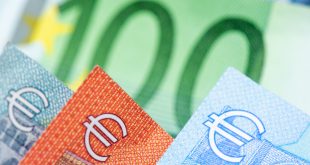The dollar hit a four-month high against the single European currency on Tuesday after strong US jobs data boosted expectations that the Federal Reserve will begin to scale back its massive asset purchase program.
Analysts said that the dollar could be supported by higher US bond yields as the likelihood of the Federal Reserve reducing stimulus weakens bond prices.
The US Labor Department said in a monthly survey on Monday that new jobs, an indicator of labor demand, hit a record high in June while employment increased.
This followed the US non-farm payrolls report released on Friday, which showed a 943,000 payroll increase in July, above economists’ expectations in a Reuters poll of 870,000.
The dollar index rose on Friday and Monday, hitting an 18-day high of 93.02 in trading in Asia on Tuesday.
By 0850 GMT, it settled at 93.035.
The euro fell to its lowest level against the US currency in four months, recording 1.1726 dollars.
The Swiss franc and the Japanese yen fell 0.1% against the US dollar as demand for safe-haven currencies eased.
The Australian dollar, which is considered an indicator of risk appetite, was affected by the decline in commodity prices and the extension of the general isolation in the country.
it rose 0.1% to $0.7334, after spending the last three weeks at levels not seen since December 2020.
The New Zealand dollar fell 0.1% to $0.69805.
In cryptocurrencies, bitcoin is trading at about $45,634, down 1.4% during the session, after hitting a three-month high of $46,759 overnight.
 Noor Trends News, Technical Analysis, Educational Tools and Recommendations
Noor Trends News, Technical Analysis, Educational Tools and Recommendations




